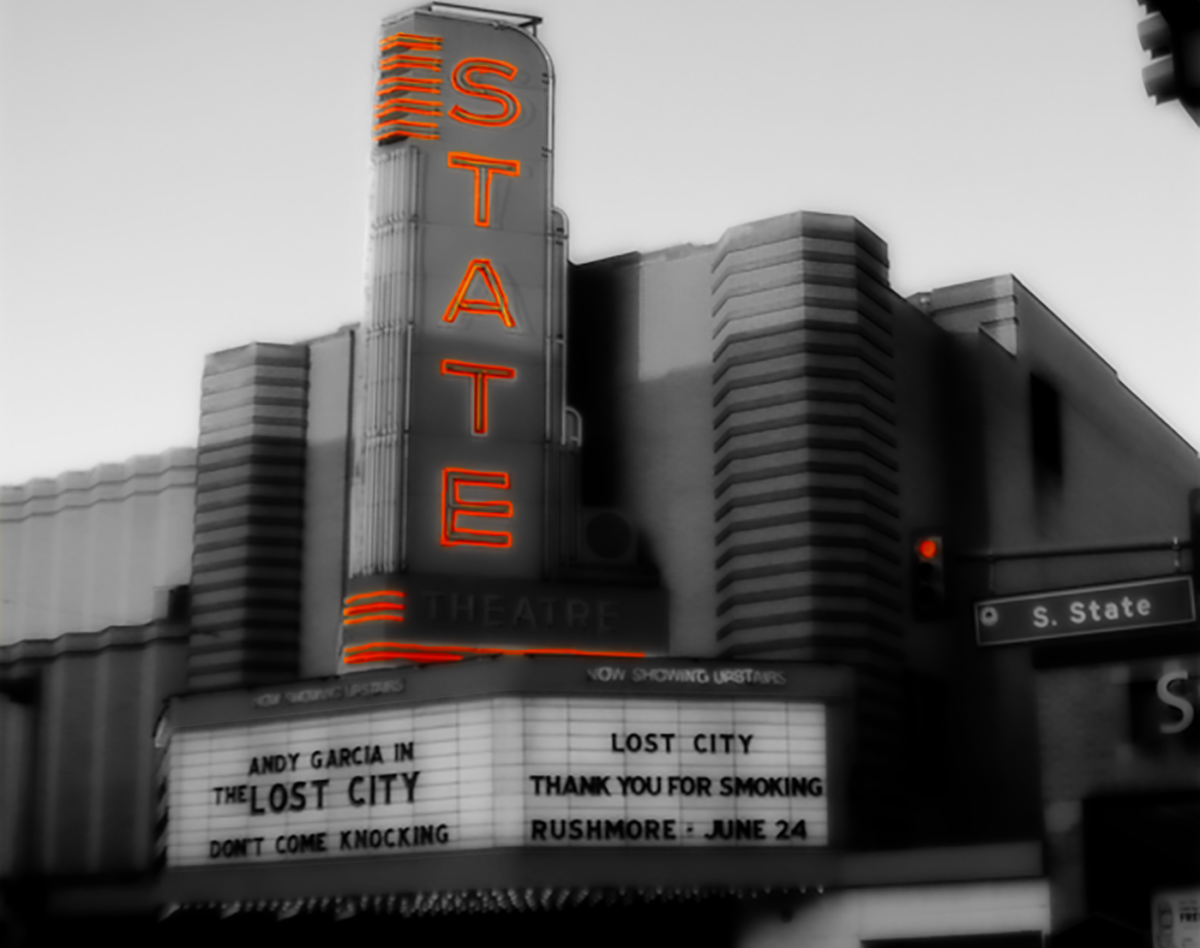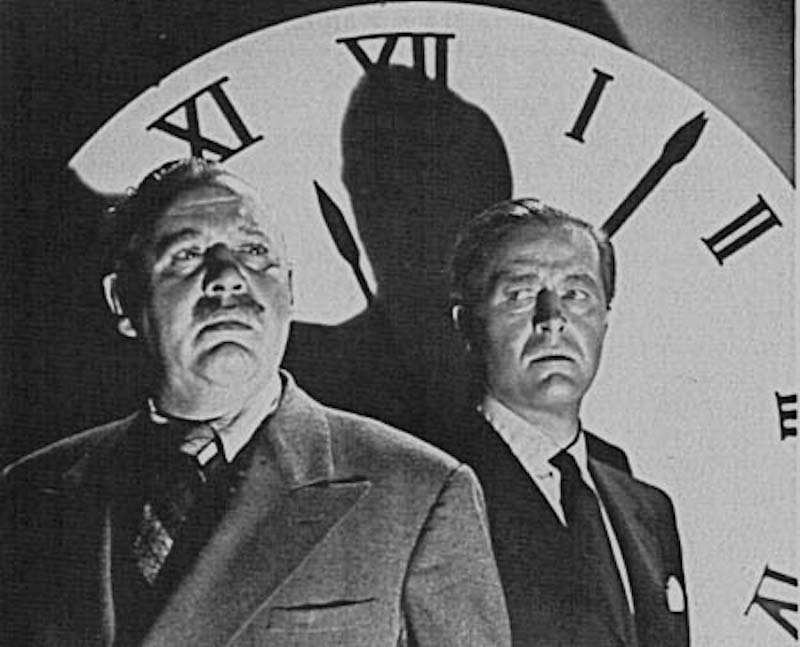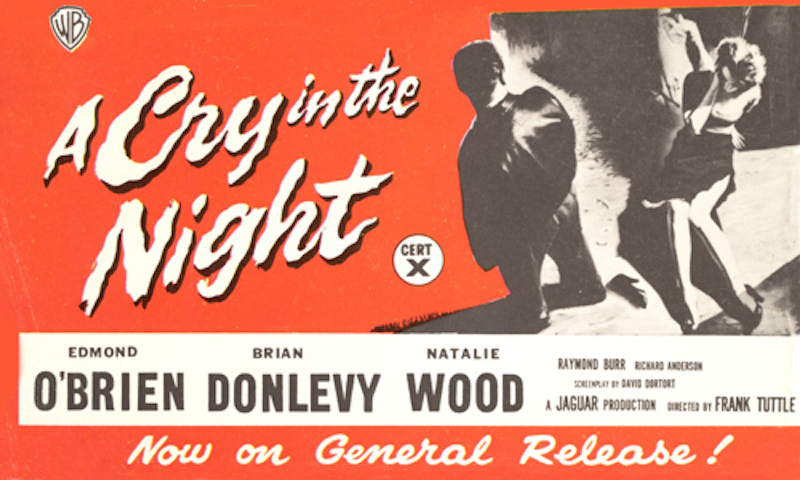
From 1948: That fabulous film noir, The Big Clock with Ray Milland, Charles Laughton, Elsa Lanchester and Harry Morgan.
The « synopsis »:
“Stroud, a crime magazine’s crusading editor, has to postpone a vacation with his wife (again) when a glamorous blonde is murdered and he is assigned by his publishing boss Janoth to find the killer. As the investigation proceeds to its conclusion, Stroud must try to disrupt his ordinarily brilliant investigative team as they increasingly build evidence (albeit wrong) that he is the killer.”
TMDb
IMDb, (which is, as I always say, one of the many tentacles of the suffocating Amazonia totalitarian state in which we live), has «a slightly different way of putting it»:
“When powerful publishing tycoon Earl Janoth commits an act of murder at the height of passion, he cleverly begins to cover his tracks and frame an innocent man whose identity he doesn’t know but who just happens to have contact with the murder victim. That man is a close associate on his magazine whom he enlists to trap this ‘killer’ — George Stroud. It’s up to George to continue to ‘help’ Janoth, to elude the police and to find proof of his innocence and Janoth’s guilt.”
IMDb
The New York Times reviewer Bosley Crowther was « impressed and urged people to see it and pay close attention »:
“… For this is a dandy clue-chaser of the modern chromium-plated type, but it is also an entertainment which requires close attention from the start.
“Actually, in the manner of the best detective fiction these days, it isn’t a stiff and stark whodunit activated around some stalking cop. Nary a wise-guy policeman clutters up the death-room or the clues. As a matter of fact, the policemen are not called in until the end. And the fellow who does the murder is known by the audience all along.
“He’s a dynamic publishing magnate, ruler of a realm of magazines and a double-dyed rogue who runs his business on the split-tick of a huge electric clock. In a mad, jealous moment, he kills his sweetie, a not very temperate young thing, and then calls upon the cagey editor of his crime magazine to find the man. Two circumstances make this ticklish. The clues have been rigged to make it look as though the murderer were another fellow. And the other fellow is—the editor.
“Out of this cozy situation of a guy trying to square himself, even though he is thoroughly innocent and knows perfectly who the murderer is, Scriptwriter Jonathan Latimer and Director John Farrow have fetched a film which is fast-moving, humorous, atmospheric and cumulative of suspense. No doubt there are holes in the fabric—even a rip or two, perhaps—and the really precision-minded are likely to spot them the first time around. But the plot moves so rapidly over them and provides such absorbing by-play that this not-too-gullible observer can’t precisely put his finger upon one. (That’s why we urge your close attention—just to see if there is anything to catch.)
“As the self-protection clue-collector, Ray Milland does a beautiful job of being a well-tailored smoothie and a desperate hunted man at the same time. Charles Laughton is characteristically odious as the sadistic publisher and George Macready is sleek as his henchman, while Maureen O’Sullivan is sweet as Ray’s nice wife. Exceptional, however, are several people who play small but electric character roles: Elsa Lanchester as a crack-pot painter and Douglas Spencer as a barman, best of all. Miss Lanchester is truly delicious with her mad pace and her wild, eccentric laugh.”
The New York Times
It is, indeed, a wonderful picture and Charles Laughton and his wife Elsa Lanchester are fabulous.


Best quotes:
Earl Janoth: [talking on intercom to Steve Hagen] “On the fourth floor – in the broom closet – a bulb has been burning for several days. Find the man responsible, dock his pay.”
The Big Clock
Louise Patterson: [after George Stroud outbids her for a picture] “Isn’t it a pity… the wrong people always have money.”
Don Klausmeyer: “I’m Don Klausmeyer, from Artways magazine.”
IBID
Louise Patterson: “Yes. [giggles] Oh, yes. Didn’t you review my show in ’41?”
Don Klausmeyer: “I think I did.”
Louise Patterson: “Oh, come in, Mr. Klausmann.”
Don Klausmeyer: “KlausMEYER.”
Louise Patterson: [laughs gleefully] “I’ve been planning to kill you for years.”
Don Klausmeyer: “Our organization, the Janoth Publications, is trying to find someone, possibly a collector of your pictures.”
Louise Patterson: “So have I for fifteen years.”
Pauline York: “You know, Earl has a passion for obscurity. He won’t even have his biography in ‘Who’s Who’.”
IBID
George Stroud: “Sure. He doesn’t want to let his left hand know whose pocket the right one is picking.”
George Stroud: “You’re the only blonde in my life.”
IBID
Georgette Stroud: “I’m a brunette.”
George Stroud: “And you’re the only brunette too.”

The Big Clock. 1948. TCM. English. John Farrow (d). Kenneth Fearing, Jonathan Latimer, Harold Goldman (w). Ray Milland, Charles Laughton, Maureen O'Sullivan, George Macready, Rita Johnson, Elsa Lanchester, Harold Vermilyea, Dan Tobin, Harry Morgan, Richard Webb, Elaine Riley, Frank Orth, Lloyd Corrigan, Theresa Harris. (p). Victor Young (m). Daniel L. Fapp, John F. Seitz (c).





